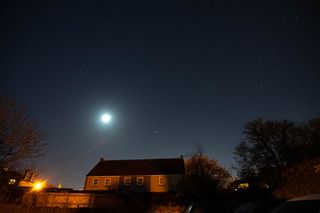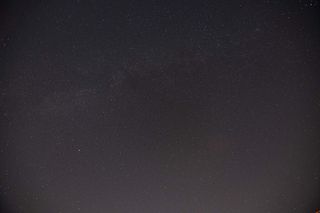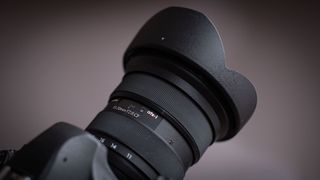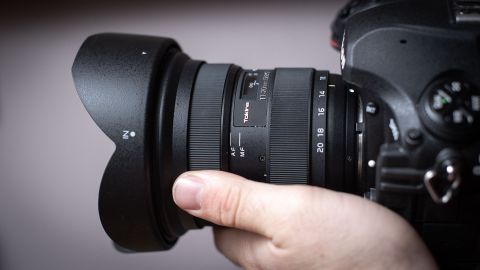Space Verdict
The Tokina atx-i 11-20mm f/2.8 CF is a versatile and robust ultra-wide APS-C lens with superior optical performance suitable for a wide range of subjects
Pros
- +
Minimal lens distortion even at 11mm
- +
Excellent optical clarity and sharpness
Cons
- -
Chromatic aberration on contrasted edges
- -
Vignetting when shot wide open
Why you can trust Space.com
Ultra-wide zoom lenses for APS-C crop sensor bodies are common, but to find one that shoots a fast and constant aperture is a little rarer. Upon its launch Tokina reported that the Tokina atx-i 11-20mm f/2.8 CF was the first of its kind to combine such a wide zoom range and maintain a constant f/2.8 aperture. Although competitors have since caught up, this Tokina is still one of, if not the best ultra-wide fast zoom for APS-C cameras on the market. Here we’re reviewing the DX F-mount version for Nikon cameras, but it’s also available in Canon EF mount.
Impressively sharp, tastefully designed, and robust enough to withstand frequent use, the Tokina atx-i 11-20mm f/2.8 CF is incredible value for money. It fits comfortably in the hand, despite having a large 82mm filter thread and even removes the problem of fiddly autofocus/manual focus switches found on other lenses by operating using a clutch mechanism on the zoom ring where pulling it down the body engages manual focus. It’s also lightweight, weighing only 550g.
Building on Tokina’s past ultra-wide heritage lens series, this lens is useful for anyone requiring a wide field of view and fast apertures. It particularly suits low light photography such as real estate, architecture, environmental portraiture, and astrophotography. There are a couple of areas in which it could be improved, which is why we’ve knocked it down half a star, but otherwise it’s nearly perfect for beginners and enthusiasts alike.
Want to weigh up your options for other camera lenses for your kit bag? Take a look at our round-up of the best zoom lenses and the best lenses for astrophotography.
Design

- Metal internals provides durability
- Sleek lens barrel with textured focus and zoom rings
- One-touch focus clutch mechanism for AF/MF switching
Tokina have built upon this ultra-wide’s design heritage and refined its features inside and out. Now, the Tokina atx-i 11-20mm f/2.8 CF benefits from a pared down barrel that suits APS-C crop sensor bodies without feeling overly bulky, despite the large 82mm front filter thread. Focus and zoom rings hug close to the barrel too, making the unit slim overall, but don’t compromise on function. Textured patterns on the rings make it easy to control focusing manually and zoom in and out whether wearing gloves or operating the lens in rain or snow. The zoom ring also pulls down to switch between autofocus and manual focus, removing the need for a switch on the side of the lens, further streamlining the design.
A simple matte black finish polishes the lens’ aesthetics and prevents it from showing up in photos of reflective surfaces. There are only two very minor points we think could be improved upon in the design of this lens. Namely, the visible screws on the side of the lens barrel which perhaps could be hidden for a more professional finish and the name logo, now in silver, which we would prefer in gold as in previous versions, but again these are very minor and subjective points on an otherwise beautiful lens.
Performance
- Sharp zoom range
- Minimal optical distortion
- Some issues with chromatic aberration

The Tokina atx-i 11-20mm f/2.8 CF was the fastest ultra-wide angle zoom lens for APS-C camera bodies upon first launch and despite other manufacturers occasionally matching this since, it’s still the best option for crop sensor camera owners.
Everything is tack-sharp throughout the zoom range and there’s minimal optical distortion with straight lines remaining straight even at 11mm. The extensive wide field of view makes it perfect for astrophotography, able to fit more of the night sky in without having to stack panoramas. It also lends itself well to architectural and real estate photography where wide views and straight lines are important for accuracy and composition.
The lens is unfortunately let down in places by chromatic aberration which appears around contrasted edges, most noticeable when shooting darker subjects against a brighter sky. This can become a problem when capturing images of the stars where color rendition is crucial. But in the interest of keeping this in context, it is an APS-C lens at an affordable price so professional astrophotographers who require cleaner imaging are unlikely to be using this lens in their work.

When shooting wide open at f/2.8 there is a fair amount of vignetting which darkens the edge of the frame, especially when shooting at 11mm. But this can easily be remedied by using lens corrections in image editing software and this seems more than acceptable at its price point. Otherwise, images are clear and sharp enough edge-to-edge in our opinion to rival even professional level full frame ultra-wides.
Manual focusing via the lens ring is quick and precise, with the infinity marker almost perfectly matching up with manual focus results to infinity. That’s important to note as many lenses that have distance markers at infinity are still slightly off, meaning that images remain soft by not achieving full focus when using the marker alone. Autofocus works well but can struggle a little in low light and is slow when compared to more expensive lenses.
Should you buy the Tokina atx-i 11-20mm f/2.8 CF?

For anyone seeking a fast, ultra-wide zoom lens for APS-C cameras (either Nikon F-mount or Canon EF-mount fit) the Tokina atx-i 11-20mm f/2.8 CF is our top recommendation. It’s sleek, slim, lightweight, and brilliantly sharp. Sure, there’s a few things it could do better, but optically and build-wise it’s an absolute unit. It’s perfect for wide field astro work and daytime shooting simultaneously thanks to the fast maximum and constant f/2.8 aperture. The zoom is improved from the old version bumping up from 16mm to 20mm in this latest iteration making it much more versatile.
Alternatives
APS-C Nikon camera owners looking to save money might want to opt for the Nikkor AF-P DX 10-20mm f/4.5-5.6G IF VR which is smaller and costs less. However, full frame Nikon DSLR shooters that require an ultra-wide zoom with the F-mount should look to the Nikon AF-S Nikkor 14-24mm f/2.8G ED but is understandably prohibitively more expensive and requires a special filter mount to take lens filters.
However, Nikon shooters that have now moved on to full frame mirrorless (such as the Nikon Z5, Z6, or Z7) will require a Z-mount lens and the Nikkor Z 14-30mm f/4 S is the best initial investment for this. While the constant aperture of f/4 isn’t quite as wide as hoped, Nikon’s in body image stabilization counteracts handheld camera shake blur to compensate for the loss of light.
Join our Space Forums to keep talking space on the latest missions, night sky and more! And if you have a news tip, correction or comment, let us know at: community@space.com.

Jase Parnell-Brookes is an award-winning photographer, educator and writer based in the UK. They won the Gold Prize award in the Nikon Photo Contest 2018/19 and was named Digital Photographer of the Year in 2014. After completing their Masters Jase has spent a good chunk of two decades studying and working in photography and optics shooting and writing all over the world for big-name brands and media outlets. Now the Channel Editor for Cameras and Skywatching at Space.com their speciality is in low light optics and camera systems.

